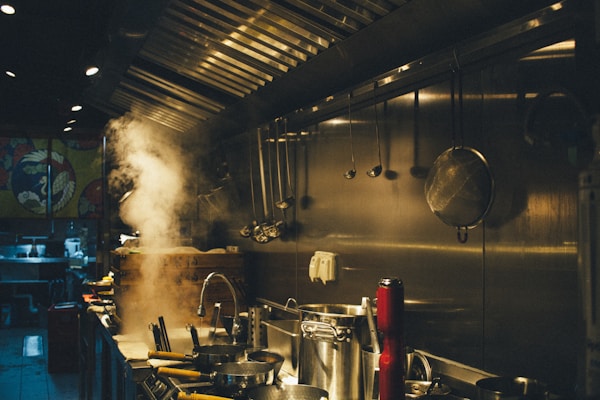If you’ve ever wondered why restaurants need those big, smelly grease traps, wonder no more. Grease traps are essential for restaurants because they help to keep the kitchen and dining area clean and free of grease build-up. Keep reading to discover why these devices are crucial to the food service industry.
What are grease traps?

Grease traps are an essential part of a restaurant’s wastewater management system. They help to prevent grease and other solids from entering the city’s sewer system and causing clogs and other problems. Grease traps work by trapping grease and other solids in the wastewater before it leaves the restaurant. The trapped grease and solids will then break down over time and can be easily removed. Without a grease trap, the grease and solids would flow directly into the city’s sewer system and could cause clogs and other problems.
Grease traps should be cleaned regularly, depending on how often they are used, and most grease trap installation companies offer grease trap cleaning. When it comes to grease trap maintenance, it’s essential to use the correct type of grease. Not all oils are created equal; some can harm your grease trap and cause clogs. So what kinds of grease can be processed in a grease trap? Four main types of grease can be processed in grease traps: animal, vegetable, mineral, and synthetic.
Animal grease comprises fat and oil from the meat, dairy, and seafood products. Vegetable grease is made up of fat and oil from plant-based products. Mineral grease is made up of lubricating oils and fats from mineral sources. Synthetic grease is made up of manufactured oils and fats. Each of these grease types has unique properties that can affect how your grease trap operates.
For example, animal grease is more likely to cause clogs and backups than other types of grease. This is because animal grease is high in saturated fat, which is harder to break down and process. Meanwhile, vegetable grease is a more environmentally-friendly option, but it can be more difficult to process than other types of grease. Ultimately, the best grease to use in your grease trap depends on your circumstances. But as long as you use grease compatible with your trap, you should be able to keep your trap running smoothly in your restaurant.
What is the grease trap installation process?
If you need to install a new grease trap, you should contact plumbing professionals for the installation. When choosing a company, ensure they have experience installing grease traps in restaurants. The plumbing company should also be familiar with local codes and regulations related to grease traps and be able to provide you with maintenance repairs and other services. Once you have found a reputable plumbing company, they will help you determine the size of the grease trap that you need. It is important to note that the installation process may vary depending on the type of grease trap that you are using.
However, most grease trap installation processes involve choosing the right location for the grease trap, preparing the area by drilling holes in the ground or the wall for piping, installing the piping that goes to and from the trap, and lastly,,, installing the grease trap itself.
How do you clean a grease trap?

Grease traps can get dirty quickly, especially if not cleaned regularly. When they become filled with grease and food waste, water cannot flow through them properly, which can cause backups in the kitchen and bathrooms, as well as create a breeding ground for bacteria. That’s why restaurants need to have their grease traps cleaned regularly. There are a few different ways that you can clean a grease trap. You can hire a professional plumber who will come in and clean all of the gunk, helping to keep your plumbing system running smoothly. You can also use a plunger to dislodge any grease and debris, a hose to flush the grease trap with water, and a grease trap cleaner to clean the grease trap.

